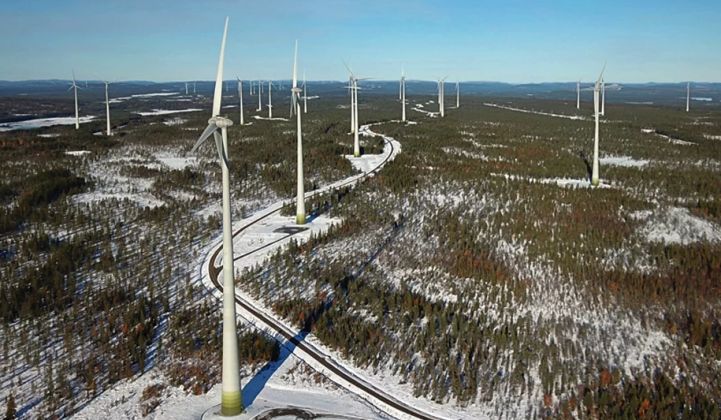The German turbine maker Enercon is looking to Chile for Christmas cheer as it prepares for another year of hardship in its home market.
The original equipment manufacturer (OEM) this month revealed it had inked an exclusivity agreement with the Chilean utility Colbun to supply 132 machines for Chile’s biggest-ever wind farm, a 607-megawatt project called Horizonte.
If it goes ahead, the order will more than double the total amount of onshore wind capacity installed in the first half of 2019 across the whole of the German market, which Enercon was reported to have a 53 percent share of in 2018.
Enercon is suffering from its dependence on the once-mighty but now-dwindling German onshore wind market.
Figures from the German wind industry association Bundesverband WindEnergie (BWE) show the country’s onshore installations plummeting from more than 5.3 gigawatts of capacity in 2017 to just 2.4 gigawatts in 2018 after the introduction of a badly designed auction system.
With total installations set to drop by 80 percent more in 2019, according to BWE, in November the German press agency Deutsche Presse-Agentur revealed Enercon was planning to cut 3,000 jobs, amounting to 17 percent of its workforce.
It later emerged that the privately owned OEM saw its first-ever loss, of €200 million ($223 million), in 2018, and was bracing for even worse results in 2019 after installing just 65 turbines across Germany in the first half of the year.
Other OEMs have been hit by the German market downturn too, with Vestas and Siemens Gamesa also announcing job cuts.
Particularly hard-hit have been Nordex, which was forced to sell out to shareholder Acciona in October, and Senvion, which went into self-administration in April and sold its intellectual property, European service business and blade manufacturing site to Siemens Gamesa in October.
“Senvion’s plight is largely due to the collapse of its domestic German onshore wind power market after a countrywide shift to competitive power contract auctions in 2018,” commented Navigant Research senior research analyst Jesse Broehl in a December blog post.
But Aris Karcanias, co-lead of the global clean energy practice at FTI Consulting, cautioned against blaming the German market for all of Nordex's and Senvion’s troubles. Compared to Enercon, he said, Nordex and Senvion had less exposure to the German onshore market.
“Enercon is the one that’s suffering the most from the German market,” he said.
Enercon's situation was further complicated because, compared to its competitors, it had a more vertically integrated supply chain and domestic delivery model.
While this approach delivers high-quality products, Enercon needed to start reshaping its supply chain much earlier to diversify its market focus and respond to a new dynamic of auctions and intensified competition, said Karcanias.
This is a journey that other manufacturers, including Vestas, GE and Siemens Gamesa Renewable Energy, have already started, he said. The question now is whether Enercon can change its business quickly enough to survive the ongoing drought in the German market.
“They’ve been the market leader in Germany, and they wanted to sustain this position,” said BWE press officer Christoph Zipf. “It was the leading onshore market in Europe, so they invested heavily in German production. The decrease in the market came as a surprise.”
“Those companies that have been internationalizing earlier have a bit of a softer fall.”
BWE is expecting the German onshore wind market to rebound, but it seems unlikely that the bounce-back will happen in the next 12 months. “We will probably not see a super 2020,” Zipf told GTM. “From 2021 onward, we hope to see a strengthened market again.”
Enercon’s press office did not respond to a request for comment from GTM. But writing in the latest edition of the company’s customer magazine, Windblatt, the management team provided a frank assessment of Enercon’s current predicament.
“There is no alternative to focusing on international markets in the course of the new orientation,” said the team. “If we are installing almost no wind energy converters in Germany, we have to react — especially as we cannot know whether the German market will ever regain its former strength.”
Enercon went through a management restructure in August to make sure the company “is in an even better position to meet the highly dynamic current and future requirements linked with the company’s increased international focus.”
Furnishing the turbines for Chile’s biggest wind farm would be a step in the right direction. But in the absence of German sales, Enercon will need many more deals like this in the new year.




